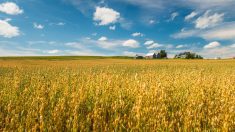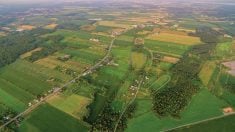Despite drought, floods and a continuing global pandemic, Canadian farm businesses came out of 2021 with a notable increase in cash receipts. While economists expect farm revenues to continue to grow, it’s a figure that will only tell half of the story for financial success.
Revenue growth does not equate to profitability. The other half of the equation is, of course, made up of input costs and other farm expenses.
We’re only a few months into 2022 and we’re starting the season with strong commodity prices, record-high input costs, and the expectation of rising interest rates.
Read Also

What to consider when setting up farm-related business ventures
Things to consider before launching a farm-adjacent side business.
With so many factors out of your control, what can you do today to better your farm’s shot at future success?
Country Guide reached out to four seasoned advisors from across the country to find out what they see ahead and, perhaps more tellingly, what they would like to see their farm clients doing.
1. Implement the CEO Mindset
Expensive suits and big corporate paycheques may come to mind when you hear the acronym CEO, or chief operating officer. But many farmers actually fit the definition — they run large, complex businesses and frequently make high-dollar decisions with a healthy amount of risk.
Think strategically

Stuart Person, senior vice-president of agriculture at MNP, would like to see more farmers picture themselves in that CEO role. That is, step back from the farm’s day-to-day operations and take a hard look at your business.
“It’s a different mindset than a lot of producers have had in the past,” says Person. “Thinking about vision and strategy and what you need to do next as the owner of a big business is very valuable.”
Build a solid team
Devoting time to big picture thinking is nearly impossible when there is a list of chores running through your head and fieldwork that needs to get done before it rains. That’s why Person advises farmers to leverage human capital and build a team.
“It’s going to be pretty hard to hire a CEO for your farm but if you’re running a fairly large business, you can probably afford to hire people to help you with tasks like feeding the cows or running the rock picker,” he says.
This structure makes it easier to shift your mindset away from daily farm tasks so you can focus your effort on the higher-value business decisions that need to be made.
A CEO’s team also includes trusted advisors. Finding the accountant, agronomist, lender, vet, etc. who are right for your business may take some time, but it’s well worth it to have a supportive team of experts around you.
Invest in Education
If your goal is to improve your management skills, Person believes education in business is a great place to start. There are a variety of learning opportunities designed specifically for farmers, such as the workshops available through Farm Management Canada (FMC) or the University of Guelph’s new Foundations in Agricultural Management online course.
To really step up your game, consider exploring more advanced training opportunities like the two-year CTEAM (Canadian Total Excellence in Agricultural Management) program offered by Agri-Food Management Excellence (AME).
Given the dwindling number of provinces with farm management funding available, chances are these learning experiences are going to come at a cost. But AME principal and CTEAM instructor Heather Broughton says they should be viewed as a worthwhile investment.
“It’s important to understand that business and leadership courses are not just another expense, they are an investment in yourself and your farm because they build your skills,” she says.
When cash flow is tight or the business has suffered a loss, the natural tendency is to cut back on expenses. But it’s in times like these that Broughton sees management training having the most impact, as participants learn practical tools to get them through hard times.
2. Know Your Numbers
Much of Broughton’s training is focused on financial management. And in a year where costs have skyrocketed and interest rates are on the rise, she’s not the only one advocating the need for in-depth analysis.
Keep your records up to date

Lorna McKercher, vice-president of southwestern Ontario agriculture at RBC, knows you can’t dig deep into your farm finances without solid bookkeeping. Even if you’re fairly confident in your bookkeeping practices, it’s worth a second look to ensure your records are as up-to-date as possible.
“It’s important to have updated records so you can see where you’re at and use that information to make decisions,” she says, noting that the frequency of your financial review will depend on the commodity you’re producing.
Being able to bring your lender an interim balance sheet and income statement throughout the year also shows that you’re on top of managing your finances.
Improve your financial statements
Since many Canadian farmers operate as sole proprietors or in a partnership, Broughton often sees managers trying to analyze their business using cash basis financial statements. Her top recommendation is to take the time to meet with your accountant and adjust your statements to accrual basis accounting.
“Your cash statement is not actually telling you if you’ve been profitable in the last year because we have the ability to defer grain sales and shift income year over year,” she says. “For management purposes, you need accrual financial statements to really understand your financial position.”
Get to know your cost of production
If you had to choose one area of financial analysis to focus on this year, Person, Broughton and McKercher agree that it should be your cost of production. Given the impact of inflation already in 2022, your costs this season aren’t going to be the same as any year prior.
“It’s important to understand that your cost of production is more than seed, fertilizer and chemical,” says Person. “Your calculation needs to be inclusive of all expenses, especially because machinery costs are huge right now.”
If calculating production costs is something you have questions about or need assistance with, he advises reaching out to your accountant first. It’s an easy thing to get help with but you have to ask, he says.
3. Assess Your Risks
McKercher and her team at RBC believe it’s key for farmers to understand their risk — and not only crop and livestock risks.
“We see some farmers focus on production risk because that’s what they know best,” she says. “But there are a lot of other risks facing farm businesses today and taking the time to learn about managing all of them is a really good thing.”
Make your analysis thorough
FMC’s AgriShield risk assessment and planning program (myagrishield.ca) categorizes risks into six families: people, finance, market, business management, business environment and production. The platform outlines 19 risk categories and suggests best practices to determine preparedness to manage specific risks and identify opportunities to improve risk management.
Assessing risks on an ongoing basis and keeping your books up-to-date makes it easier to proactively approach your advisors about a potential cash-flow challenge or an upcoming event that is going to have an impact on revenue.
When it comes to communicating with your lender, McKercher says it’s always better to be prepared and call ahead so you can come up with a plan together. Remember that agriculture bankers have many clients in various sectors so your challenge may be something they have seen before. But the longer you wait to communicate the issue, the harder it is to solve it, she says.
Choose your protection
Since grain prices and some livestock markets were strong at the end of last year and beginning of this year when inputs may have been paid for, Person is concerned that not enough farmers are protecting themselves or calculating the impact if prices come down by fall.
“Do what you can to protect your revenue by hedging and pay close attention to your insurance options,” he advises. “It’s going to be a really expensive crop to grow this year, so having your backstops in place is key.”
4. Start or Update Your Written Business Plan

Brent VanParys, business transition services consultant at BDO, predicts Canadian agriculture is in for some major changes over the next few years as farmers continue to invest in their farms and prepare for succession.
Whether you’re newly building your business or transitioning to the next generation, he thinks one of the most important moves you can make is putting together a strategic business plan.
If you’re among the majority of Canadian farmers who don’t currently have a written plan, VanParys recommends engaging a professional advisor to help you get started. In short, he says it’s a process that answers three key questions about the business and management team:
- Where are we now?
- Where are we going?
- How are we going to get there?
“In some operations the business plan is stored in someone’s brain and not really shared with the other members of the team,” he says. “Business planning is a great communication device and it provides clarity, which is huge.”
The process also brings alignment between partners and generations. When he guides farm families through transition, VanParys finds that business planning is a great development tool for the incoming generation because it teaches them how to problem solve with the senior generation and also provides a platform for their new ideas.
If you already have a written business plan, how often do you look at it? It’s a tool that should be out on the table many times throughout the year, VanParys says. It should be challenged, amended and updated on a regular basis.
5. Begin Assessing Your Environmental Footprint
Looking ahead, McKercher sees the importance of agriculture’s carbon footprint and environmental impact growing in the future. It’s an area that is being taken very seriously in the business world and it will benefit farmers to be proactive versus reactive, she says.
While some programs like the Canadian Roundtable for Sustainable Crops Metric Platform are already collecting sustainability data, many sectors have customers from around the world asking more about environmental-friendly production practices.
You can use tools like the Canadian Field Print Calculator to begin assessing your footprint or get involved with commodity-specific projects or the Canadian Agri-Food Sustainability Initiative.















